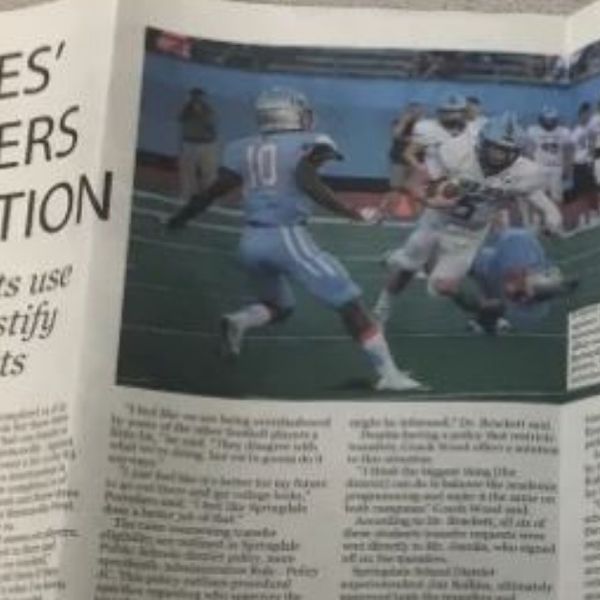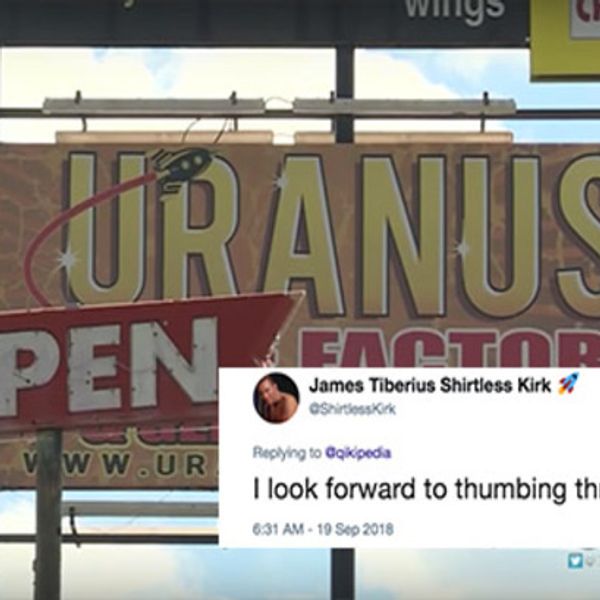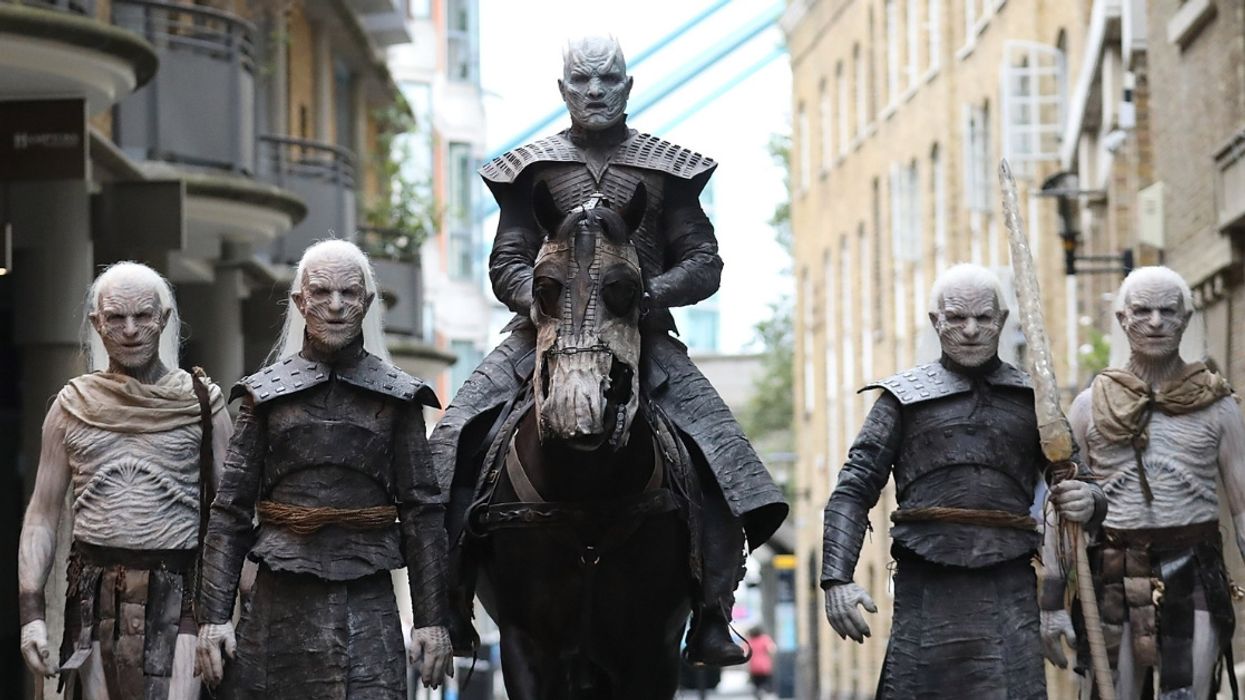December, 2000, OSAKA, Japan - A trip to Japan is like a continuous time warp back and forth through history, from the past to the cutting-edge present, then back to the ancient. My mission was history based. The international opening of the Japanese American National Museum's traveling exhibit on the history of the Japanese Americans of Hawaii at the Okinawa Prefectural Museum in Okinawa, Japan.
My arrival in Japan was at Kansai International Airport, a stunningly contemporary facility built on a vast man-made island in Osaka Bay. The Japanese flair for efficiency and design, rationality melded with style, made the normally punishing process of an international transit a smooth, in fact, pleasurable, experience. We sailed through customs, exchanged our dollars for yen, had a tasty light snack of buckwheat noodles all in stylish comfort, and we were on our way to our destination, Okinawa.
The opening of the museum's exhibit was a great success. A large contingent of museum supporters and staff were in attendance, including Irene Hirano, the museum's president and executive director. U.S. Ambassador to Japan, Thomas Foley, U.S. Senator from Hawaii, Daniel Inouye, Lt. Governor of Hawaii, Mazie Hirono, and Governor Inamine of Okinawa were our honored guests together with more than 250 other Americans who had traveled to be with us for the opening. As the only American to speak at the ceremony in both Japanese and English, I became something of the bridge to mutual understanding that is the point of our exhibit.
The following day was back to the future. The museum sponsored a special educational program at the National Okinawa Youth Center on Tokashiki Island, a fast jetfoil ride away from the main island. The program featured two astronauts from NASA, Daniel Tani, a Japanese American from Chicago, and Mamoru Mohri, a Japanese astronaut who has flown two NASA space missions in the past two years. The program had the eyes and imagination of the young people of Okinawa soaring to the stars.
From Okinawa, I flew to the southern Japan city of Fukuoka because of my personal interest in architecture. I had read that American architect Jon Jerde had designed a remarkable project in Fukuoka called Canal City. Remarkable it is! Jerde has designed a fancifully futuristic commercial complex incorporating one of the many canals of Fukuoka. There are restaurants and shops galore, offices and educational facilities and a dazzling multiplex cinema and a grand theater for Broadway musicals - indeed a traveling production of Disney's "Lion King" was the next production booked. Whimsically geometric structures snake and undulate following the curves of the canal. The canal itself spouted jets of water five stories up. Lights bubbled and flickered or glowed and subtly illuminated the contours of the fanciful buildings. There were performers on little peninsulas out on the canal. But the cascade of people flowing up and down the escalators and stairways made simple people watching just as entertaining. Jerde's creation is an architectural Broadway musical. And my actor's instincts led me to book my hotel reservation at the Hyatt Grand right smack center stage in the middle of the whole colorful production. I lived for two days and two nights in an architect's theatrical fantasy.
Then a super-fast bullet train sped me right back into history. When it stopped, we transferred to an old-fashioned ferry that sailed leisurely toward the legendary shrine island of Miyajima shrouded in the mist of history. As a matter of fact, there was a light mist in the air as we approached the famous floating torii gate to Itsukushima Shrine that seems to mystically rest on water. Legend has it that because the island is considered sacred, there were no births or deaths allowed on it. That all had to take place on the mainland. Even today, there is no hospital on the island. However, at the ferry station, we did take a taxi, instead of the rickshaw, to our lodging. As we were driven through the narrow passageways of the village of Miyajima, it felt as though we were passing through the set of a samurai movie. A short way up the hillside and we arrived at a magnificent Japanese villa. This was the historic Iwaso Inn, one of the great lodges of Japan. We were gracefully ushered by a charming kimono-clad chambermaid to a classically formal Japanese room. Beyond the veranda lay a serene view of a maple forest. I could have sat meditating on that veranda all day. But we had so much we wanted to do.
It was autumn and the forest had turned a spectacular palette of reds, oranges, and yellows as well as the deep greens of the evergreens. We took a cable ride high over the spectacularly painted forest to the topmost point of the island. We fed the famously hungry tame deers that roam the island of Miyajima. We trooped through the shrine with the day-tripping tourist horde. Exhausted, we returned to our inn. I soaked in the hot Japanese bath gazing up at the steam wafting through the pine branches. Every tired muscle in my body seemed to melt into blessed relaxation.
Shortly after I had changed into my formal kimono provided by the inn, a gentle knock came on our sliding door. Our chambermaid was ready to serve us dinner. The low, spacious lacquered table in our room became the stage for a seemingly endless parade of small, artfully arranged dishes presented with elegance and grace. This was the renowned "kaiseki" dinner of ancient Japan. When the last delicious morsel had been served, the chambermaid suggested that we go for an after dinner stroll on the island. Miyajima at night, she urged, is something quite special.
She was so right. The island was magically transformed. The hurly burly of the day-trippers had disappeared and in its place was a tranquil scene of kimono-clad people quietly admiring the illuminated shrine and pagoda. The reflection of the shrine on the calm, dark water made it seem almost supernatural. On our way back, we ambled past the detached villa of our inn that was reserved for the emperor. Emperor Hirohito himself, we were told, had regularly stayed there. When we returned to our room, the lacquered table had vanished and in its place futon beds had neatly been arranged. That night, I slept deeply dreaming the dream of some past emperor.
Another quick bullet train ride the next day and we were in the shining new metropolis of Hiroshima. This city, flattened by the devastation of the atomic bomb over half a century ago, has rebuilt itself into a modern urban center of broad, tree-lined boulevards, tall glassy buildings and, at its focal point, a leafy park dedicated to international peace, the center of which is the Peace Museum. The exhibit there is a deeply moving chronicle of the human suffering as a result of the dropping of the bomb.
In Hiroshima, I was back to wearing my hat as the chairman of the Japanese American National Museum. After Okinawa, we want to tour our exhibit throughout Japan. It is currently set for Osaka in March of 2001. Because a large number of Japanese immigrants came from Hiroshima, as indeed my maternal grandparents did, we would very much like to see our exhibit visit there. I had met Governor Yuzan Fujita of Hiroshima on a previous visit and so had arranged to meet with him again to gain his support and guidance finding a way to get our exhibit to Hiroshima. The Governor greeted me warmly and, after I made my request, he immediately had ideas of a venue to be considered. He called for his personal car and driver and promptly dispatched me to examine his suggested site. Transported in the luxurious comfort of the Governor's car, I toured a handsome new exhibition hall. I now feel rather confident that the people of Hiroshima will be viewing our exhibit.
After visits with relatives in Hiroshima, I was back on the bullet train for my final stop on this trip, Osaka. The Second City of Japan is an overwhelming metropolis of congested traffic, bustling commerce and energetic people. And this is where the popularity of Star Trek in Japan is enormous. Through Russ Haslage of the Excelsior campaign, fans in Osaka had contacted me, and a charming young lady, Sachie Kubo, had made arrangements, to show me their city.
When I checked into my hotel room, the view that greeted me through my window was of the great Osaka Castle, the most spectacular historic structure in Japan. Circled by a wide moat protecting a lush park-like area, then looming up on a base of gigantic boulders amazingly fitted together, the castle sparkled in the sun with its golden embellishments. I had to go across immediately to tour it.
Crossing the arched bridge over the moat felt like the prelude to entry into the past. This was the very place where great battles were fought by the most powerful shogun in Japan's history, Toyotomi Hideyoshi. Stepping into this storied precinct, I felt as though I were going back in time. That illusion was immediately smashed when a trendy young runner jogged by wearing a shiny spandex running outfit, then another wearing earphones with a thin metallic antenna bobbing over his head. I learned that the park inside the moat was one of the popular running paths of Osaka. As I walked through the outer entrance of the castle and the gigantic wood gate studded with black iron braces, I recognized it immediately from the television mini-epic, "Shogun." I remembered that this was where it was filmed on location. We trudged up a seemingly endless series of gray granite steps to the castle's main entrance. As we huffed and puffed, our straining muscles let us know how impregnable this castle must have been to the warlords who attacked it. We paid our admission and walked in. I stood there stunned. In front of us was a bank of elevators! There were video displays on the history of the castle built right into the walls! And I felt the comforting warmth of forced air heating in this ancient castle! I learned from a brochure that this historic castle had been completely rebuilt just a few years ago -- with all modern conveniences to boot. With a slight sense of disillusionment, we took the elevator to the top of the castle. The view was great. We were taking in the panoramic vista of modern day Osaka from the highest point of the castle, when I heard an American accented voice shout at me, "My god! You're Mr. Sulu, aren't you?" With one excited exclamation, I was brought from my fantasies at the pinnacle of this recently rebuilt ancient castle, back to my very own present day reality. The cameras flashed as I posed for pictures with American Star Trek fans touring in Osaka.
I spent the following day with Japanese Star Trek fans in Osaka. Four beaming faces were waiting in the hotel lobby that morning to show me the sights of this city. Sachie Kubo and Masanori Mizuumi were from Osaka but I was both flattered and moved to discover that Yoshimitsu Murata and Youichi Nieda, whom I had met on a previous trip to Tokyo earlier this year, had traveled all the way down from Tokyo to share the day with me.
It was a fun-filled day of roaming through a vibrant and engaging metropolis of busy marketplaces and elegant shops, raucous entertainment quarters and traditional bunraku theater and temples and shrines. We even saw a traditional wedding ceremony taking place at one of the temples. That evening, about a dozen more fans joined us at a restaurant for a lovely dinner of Japanese hot pot and conversations about the Excelsior campaign. The savory steam that wafted up from the bubbling pot of vegetables, seafood, noodles and other delicious morsels seemed to warm new friendships and enhance old ones.
All to soon, our 10-day trip to Japan was coming to an end. The next afternoon, we were on the express train to Kansai International Airport for our flight to Los Angeles - home to prepare for the holidays. As I write this on my laptop in the airport lounge in Osaka, I'm reminded of the many events of this past year. Much has happened, great and small. We have much to be thankful for. And much we need to do in the future. May I wish you all the joys and blessings of this holiday season.
George R.R. Martin Just Confirmed A Popular 'Game Of Thrones' Fan Theory About White Walkers
Game of Thrones scribe George R.R. Martin is promoting his new book in the A Song of Ice and Fire series, and provided insight into a group of characters fans have been waiting to learn more about.
As an author known to inject symbolism into the fantastical worlds he creates, Martin revealed that the icy group of White Walkers from Game of Thrones personified climate change.
What the ancient humanoid race of icy creatures stand for is a concept many have theorized all along.
Now fans received confirmation from the author himself.
Martin may have prognosticated climate change while he was writing GoT. The cold that transcends upon Westeros sounds eerily familiar.
"It's kind of ironic," Martin told the New York Times.
"Because I started writing 'Game of Thrones' all the way back in 1991, long before anybody was talking about climate change."
"But there is — in a very broad sense — there's a certain parallel there. And the people in Westeros are fighting their individual battles over power and status and wealth."
He added:
"And those are so distracting them that they're ignoring the threat of 'winter is coming,' which has the potential to destroy all of them and to destroy their world."
"And there is a great parallel there to, I think, what I see this planet doing here, where we're fighting our own battles. We're fighting over issues, important issues, mind you — foreign policy, domestic policy, civil rights, social responsibility, social justice. All of these things are important."
Martin continued:
"But while we're tearing ourselves apart over this and expending so much energy, there exists this threat of climate change, which, to my mind, is conclusively proved by most of the data and 99.9 percent of the scientific community. And it really has the potential to destroy our world."
"And we're ignoring that while we worry about the next election and issues that people are concerned about, like jobs."
Marten stressed the importance of caring for the environment, adding that protecting it should be a top priority.
"So really, climate change should be the number one priority for any politician who is capable of looking past the next election."
"We spend 10 times as much energy and thought and debate in the media discussing whether or not N.F.L. players should stand for the national anthem than this threat that's going to destroy our world."
When the author was asked if he could "pick the best real-world, present-day match — politicians, celebrities" and pair them up with corresponding characters from his novels, Martin answered: "Pass."
Fire and Blood: 300 Years Before a Game of Thrones, is expected to be released on November 20.
H/T - NYtimes, Twitter, Mentalfloss
This Brand's Tweet History Is A Hilariously Fitting Representation Of A Brand's Life Cycle 😂
Carl's Croutons tried their hand at social media to advance their brand.
But their objective got derailed when their tweet ignited a confusing thread that sent everyone down the rabbit hole.
@topherflorence captured highlights from the thread that received over three thousand retweets for its zaniness alone.
Can you follow?
the history of every brand on twitter somehow https://t.co/fWVXsElCvr— D🌑CFUTURE (@D🌑CFUTURE) 1540403954.0
The bread crumbs company endeavored to stir excitement for the brand by encouraging participation with the following tweet:
"Taking our first steps on the www!! tell us your favorite crouton recipes! #croutons #yum"
Harmless, right?

But somewhere along the way, the brand mixed business with politics. @religiousgames noticed that Carl's Croutons issued a one-word directive: vote.
The Twitter user asked, "What does it mean?"
@topherflorence What does it mean? https://t.co/IKifvva7ba— Vincent Gonzalez (@Vincent Gonzalez) 1540408943.0
Did the Carl's Croutons account manager get his social media account wires crossed? Possibly. But then we're not sure.
@topherflorence responded by saying, "lol that wasn't me i would posted something way dumber."
@religiousgames lol that wasn't me i woulda posted something way dumber— D🌑CFUTURE (@D🌑CFUTURE) 1540409220.0
The following tweet from Carl's Croutons attempted damage control:
"Carl's Crutons [sic] regrets the inappropriate tweet from earlier and we sincerely apologize to the people of The Republic of Malta."

So how did Carl's Croutons insult the Republic of Malta?
@topherflorence @oggborbis ...how did they insult Malta? I need to know.— astronaatti (@astronaatti) 1540405285.0
@Bestorb shed some light on why the Southern European island country may have been insulted by sharing a YouTube clip of episode 1008, "Final Justice," from Mystery Science Theater 3000.
Did it have something to do with the country's dominant population of women?
@astronaatti @topherflorence @oggborbis https://t.co/9imm31y8cM— Nick Bestor (@Nick Bestor) 1540429565.0
The thread spun off in all different directions.

@topherflorence @xoxogossipgita laughing hardest at crouton recipes— super normal internet (@super normal internet) 1540492558.0

@topherflorence That last one is life 🙌🏽— Rich F. Santiago (@Rich F. Santiago) 1540418084.0
@topherflorence WOW this was a ride.— Jackal's Husband, Yuko (@Jackal's Husband, Yuko) 1540405005.0
@ItsBobberto @topherflorence @austin_walker Late stage social media.— Mr. Jackpots (@Mr. Jackpots) 1540435914.0
There were many takeaways from the esoteric thread, but the one directive really stood out.
@topherflorence @MaxKriegerVG Haha, you got me. But seriously, vote.— Benoit Doidic (@Benoit Doidic) 1540414697.0
@topherflorence @zoebread Clever girl. https://t.co/i5VB74s8F9— brott rambler but spooky (@brott rambler but spooky) 1540478919.0
@topherflorence @NoraReed This was a wild ride.— Queer Eye for the Animorphs Reboot (@Queer Eye for the Animorphs Reboot) 1540412903.0
@topherflorence @seangentille I’m experiencing a new level of cringe right now— Helle Hansen 🌸 (@Helle Hansen 🌸) 1540423182.0
@topherflorence @ZaaackKoootzer This is the greatest thing I've seen all day— your very own monica bellucci dream (@your very own monica bellucci dream) 1540406700.0
@topherflorence @spacetwinks Optimistic engagement. Regret. 'How do you do, fellow kids.' Unity through shared outr… https://t.co/6VGrLNPZVp— Ink-stained @ MFF 2018 (@Ink-stained @ MFF 2018) 1540405582.0
@topherflorence @spacetwinks 2 is where they decided to hire a social media manager. 3 is when they decided to hire a different one.— Ink-stained @ MFF 2018 (@Ink-stained @ MFF 2018) 1540412100.0
@LaserBlade @topherflorence yeah i actually think they're pretty good croutons but then again they pay me to say that— cool dog mowing lawn (@cool dog mowing lawn) 1540436982.0
@topherflorence @mattfx This is magically funny like Goofy doing an unannounced set in a small black room— M💎R (@M💎R) 1540482697.0
@topherflorence @ZaaackKoootzer This is the greatest thing I've seen all day— your very own monica bellucci dream (@your very own monica bellucci dream) 1540406700.0
There's still an unanswered question.
@topherflorence I need to know the Malta story tho— NeoSorosbot (@NeoSorosbot) 1540423045.0
So who is Carl's Croutons anyway? Nobody knows. Just vote.
Woman Was Fired For Refusing To Wear A Bra At Work—And Now She's Suing
Christina Schell, from Alberta, Canada, stopped wearing bras three years ago citing health reasons.
While Schell did not specify the health reasons, she did state she finds them to be "horrible."
But after her refusal to sign or adhere to a new enforced dress code policy to wear a bra or tank top under her work shirt at a golf course grill where she worked, Schell was promptly fired.
Now, the 25-year-old has filed a human rights violation against the Osoyoos Golf Club, Osoyoos, in British Columbia, Canada.
Schell said:
"I don't think any other human being should be able to dictate another person's undergarments."
When she asked the general manager, Doug Robb, why she had to comply, the manager told her the mandate was for her protection.
Robb allegedly said:
"I know what happens in golf clubs when alcohol's involved."
After losing her job, she brought the case to the British Columbia Human Rights Tribunal and told them the club's dress code was discriminatory because the rule didn't apply towards male employees.
Schell told CBC:
"It's gender-based and that's why it's a human rights issue. I have nipples and so do the men."
David Brown, an employment lawyer in Kelowna, BC, said gender-specific dress codes could be viewed as discriminatory under the BC Human Rights Code.
He stated:
"It's an interesting question as to whether or not an employer can dictate the underwear that women can wear, but they don't say anything about the underwear that men can wear, and does that create an adverse impact on the individual?"
Brown added:
"If this policy is found to be discrimination, the next question is does the employer have a bonafide occupational requirement to essentially impose this on the individual?"
"I'm kind of scratching my head as to what that occupational requirement would be."
@GlobalBC The policy is sexist the peopl supporting it are sexist. Hope she wins her complaint— Lori bell (@Lori bell) 1529692660.0
@Shelby_Thom @WoodfordCHNL @GlobalOkanagan @GlobalBC Then men should have to wear either a tank top or undershirt— caffene fiend (@caffene fiend) 1529624161.0
@SoldByBrock @Shelby_Thom @GlobalOkanagan @GlobalBC What does common courtesy have to do with wearing a bra? Breast… https://t.co/ZVI2xDdpgf— M Shumway (@M Shumway) 1529843759.0
As for the tank top option, due to working under oftentimes extreme heat serving tables outsides, Schell did not want to wear another layer of clothes just because of her gender.
Schell said:
"It was absurd. Why do you get to dictate what's underneath my clothes?"
Employment lawyer Nadia Zaman told CBC that the club can enforce a gender-specific policy as they deem necessary as long as the establishment can prove it is for the occupational safety of its workers.
But the attorney questioned if forcing female employees to wear a bra was applicable in this case.
Zaman stated:
"If they simply require that female employees wear a bra but then they don't have a similar requirement for males, and they can't really justify that … then there is a risk that their policy's going to be deemed to be discriminatory."
Under British Columbia's discrimination law, it is illegal for employers:
'to discriminate against any individual because of his race, color, religion, sex, or national origin'.
@GlobalBC @globalnews Logistically bras or the absence of does not impact health or work performance. That is my v… https://t.co/65cLHBMowf— Louisette Lanteigne (@Louisette Lanteigne) 1529769211.0
McDonald's employee Kate Gosek, 19, agrees with Schell in that the dress code is "unnecessary." She too was harassed by her employers at a McDonald's in Selkirk, Manitoba, over refusing to wear a bra.
"She just told me that I should put on a bra because, McDonald's—we are a polite restaurant and no one needs to see that."
Schell's case sparked plenty of debates on Twitter.
@DunnMan77 @GlobalBC It's just discriminatory, woman shouldn't have to wear bras if they don't want to. As well as… https://t.co/RXhRVWUuNy— Mary Johnson (@Mary Johnson) 1529685276.0
@DunnMan77 @GlobalBC Men do not have to wear underpants if they don't want to. As of right now there are no laws to… https://t.co/l8FuPVybWo— Mary Johnson (@Mary Johnson) 1529686418.0
@GlobalBC Women have the right not to be forced to wear a bra Shaving & makeup also is a choice. If you want to do… https://t.co/Ybkj6PLDnD— Lozan (@Lozan) 1529686156.0
@Lozan72 @GlobalBC I would completely understand her and your argument if we were talking about a potential law to… https://t.co/trRyNAubn4— Chris George (@Chris George) 1529690293.0
@GlobalBC This story frustrates me. There's no dress code equivalent for men? Well if I saw the outline of a male s… https://t.co/5YbAvXKRcO— Molly Max (@Molly Max) 1529705327.0
Schell is not alone in her disdain for bras.
@GlobalBC I personally HATE wearing a #bra absolutely hate it with passion and unashamed to admit it. I HATE BEING… https://t.co/GEi3LtxIDa— Lozan (@Lozan) 1529686305.0
Schell is still waiting to hear from the Human Rights Commission about her claim.
H/T - GettyImages, Twitter, Indy100, CBC















